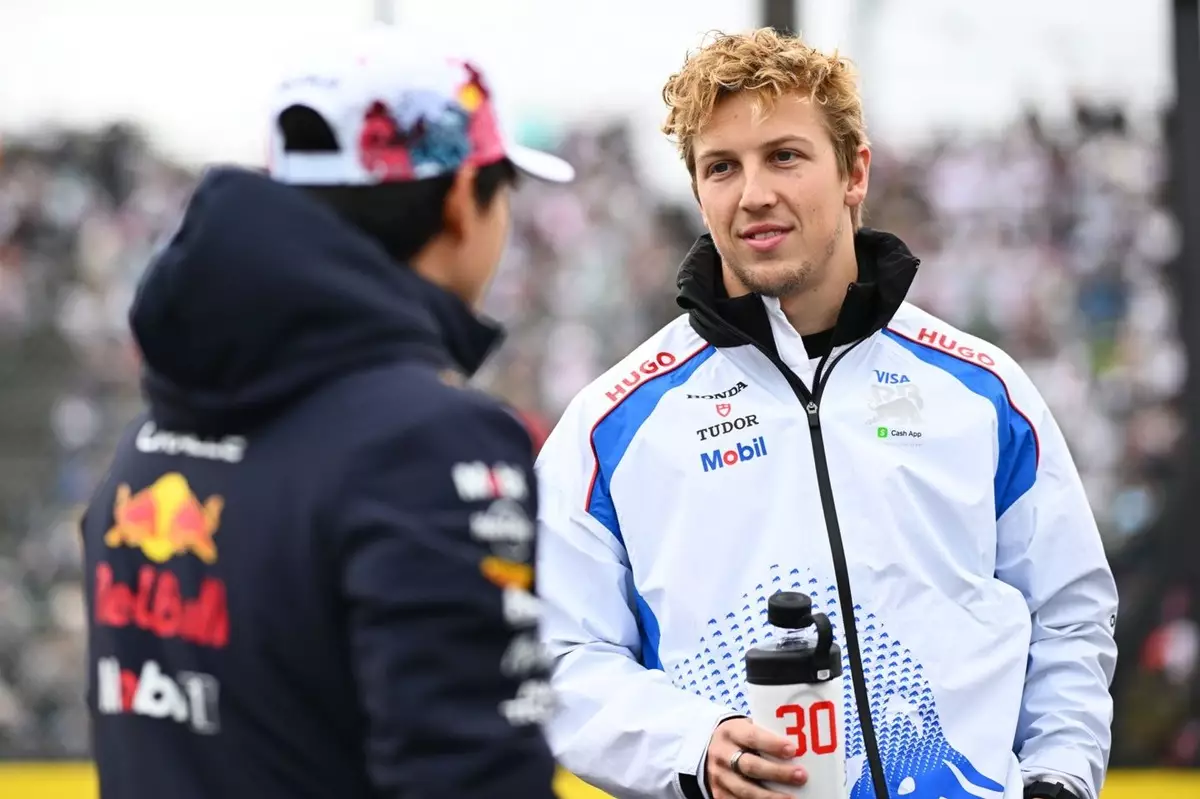In the high-octane world of Formula 1, where every millisecond counts, the nuances of vehicle performance and driver capability can set the foundations for future success or failure. The Red Bull Racing RB21 presents a fascinating dichotomy: it offers a glimpse of performance potential within a confined operational window. This delicate balance raises key questions about the drivers at the helm of this vehicle—specifically Liam Lawson and Yuki Tsunoda—who have experienced differing degrees of success and challenges, ultimately highlighting how the dynamic nature of racing can shape careers in profound ways.
Despite his struggles, Lawson has exhibited signs of resurgence in his career since being reassigned to the Racing Bulls. While logic might dictate that being second to Isack Hadjar could stymie his progress, Lawson’s ability to refine his skills in this environment showcases the resilience that is essential for any great driver. However, the obstacles that he faces—most notably the constant specter of penalties and inconsistent race pace—reflect a more intricate issue. For Lawson to ascend the ranks, he must not only excel individually but also capitalize on the dynamics within his team. The racing environment thrives on competition; thus, securing a foothold amid fluctuating leadership in performance becomes paramount.
Comparative Performance: Turning the Tide
When dissecting the race strategies employed during their outings, a fascinating contrast emerges between Lawson and Hadjar. At the Saudi Arabian GP, Hadjar displayed a keen racing instinct, swiftly overtaking formidable competitors like Fernando Alonso. This maneuver not only allowed him to optimize his race strategy but also to preserve his tire performance for a longer stint. In stark contrast, Lawson, who became mired in Alonso’s wheel tracks for several laps, demonstrated a struggle to mirror the decisive moves that could have not only benefited his race but also elevated his standings.
Such differences not only reflect the changing scales of performance between teammates but also draw attention to the learning curve that young talent like Lawson must embrace. Understanding his position in the hierarchy of Red Bull drivers and learning from Hadjar’s timely interventions could be the catalyst Lawson needs. He is, after all, at a critical juncture where regaining confidence is as crucial as the improvement in raw performance.
Confidence and Reflection: The Mental Game
In this sport, mental fortitude is as important as driving prowess. Lawson’s assertion that his confidence remained intact following his D-emotion from Red Bull reads as somewhat disingenuous. One cannot help but speculate that the emotional toll and the public nature of performance assessment must surely affect an athlete’s mindset. Acknowledgment of these feelings is integral; embracing setbacks and using them as a springboard to greater accomplishments is often what defines successful athletes.
This mentality could serve him well, echoing the immortal sentiment from Chumbawamba’s song: resilience is key. Every driver faces challenges, and those who can bounce back not only survive but thrive, turning pressure into performance. Thus, Lawson’s trajectory could change dramatically if he actively works on reconciling these mental hurdles while focusing on concrete performance improvements throughout the season.
Tsunoda’s Emerging Dominance
In contrast, Yuki Tsunoda is beginning to reveal why he was arguably the preferred choice for the Red Bull seat initially. His road toward unlocking the full performance capabilities of the RB21 appears to be a steady yet promising climb. Early frustrations may have overshadowed his journey, but recent outings indicate that he is increasingly finding the precise configurations that help him navigate qualifying and race scenarios more effectively. Each lap begins to display incremental improvements that illuminate the path to reaching Q3 more consistently.
Tsunoda embodies patience and perseverance as fundamental qualities in the fiercely competitive climate of F1. He has absorbed critical lessons from each interaction with his car, resulting in a strategy that seeks not just short-term results but long-term advancement. As he strives toward unlocking that elusive potential and adapting to various racing conditions, the evolution of his performance might give a glimpse of what is possible for the team.
Future Directions: Aiming for Impact
With the ongoing competition in the midfield shaping the landscape of Formula 1, both Lawson and Tsunoda have their work cut out for them—addressing their own challenges while vying for a competitive edge against teams like Williams. The absence of the RB21’s outright performance puts additional pressure on them to bag points consistently. As they test the limits of their capabilities, it will be critical for both drivers to frame their ambitions not merely as a battle for individual excellence but as a joint venture toward securing Red Bull’s status amid the tumultuous battle for points.
Enhancing their strategies, embracing the lessons learned from current challenges, and maintaining solid teamwork could ideally cultivate growth not just for individual drivers but also for the Red Bull team as a whole. In the ever-evolving race of Formula 1, the potential for greatness often emerges from unfathomable challenges surmounting pitfalls—where the determined often find their rightful place among the legends.

